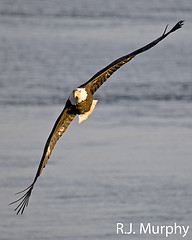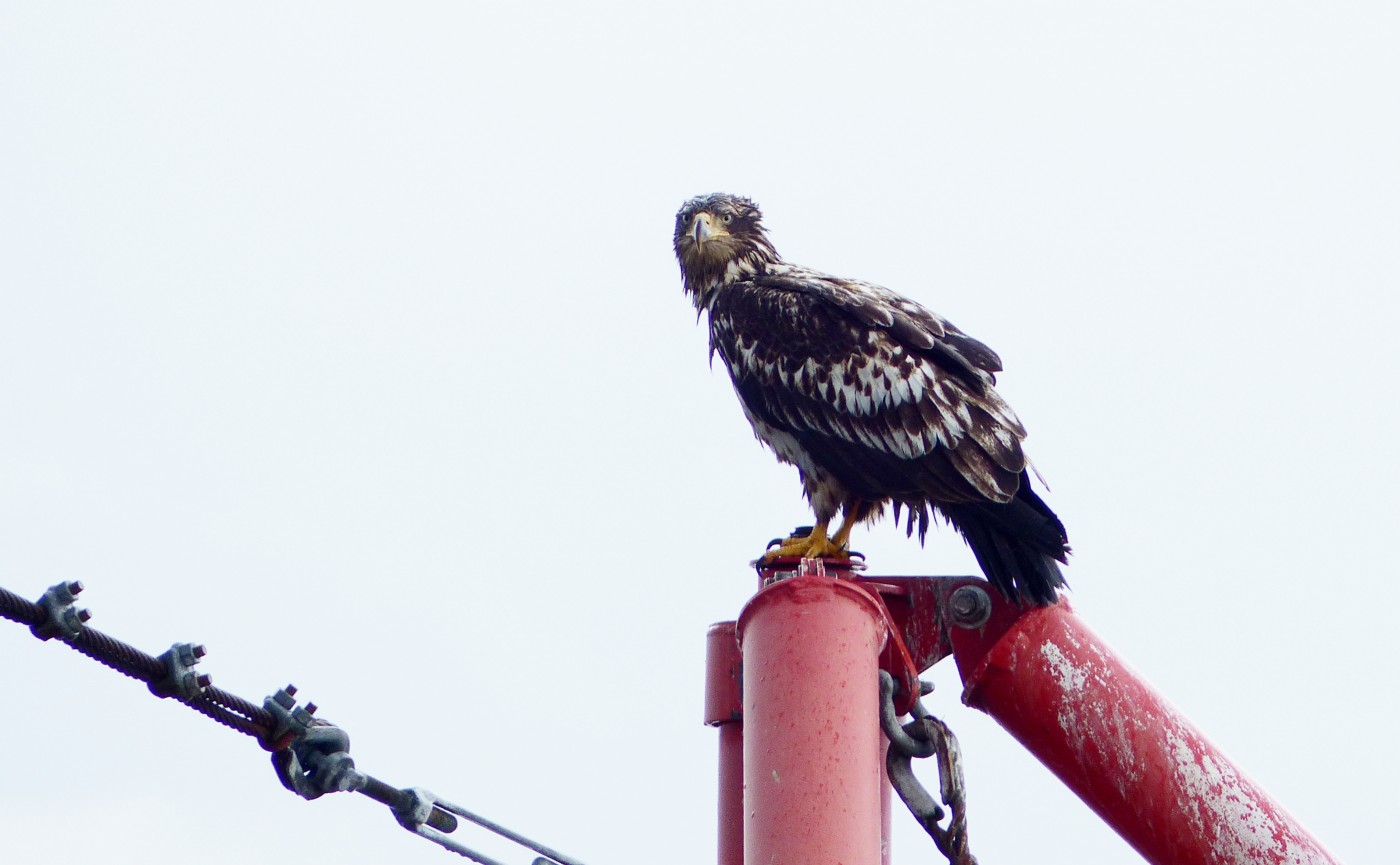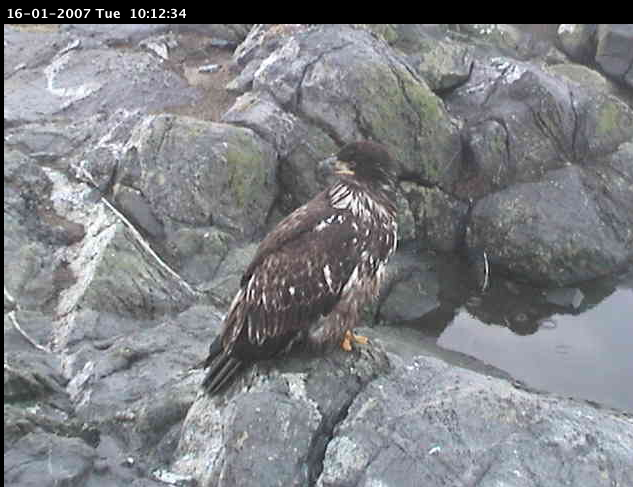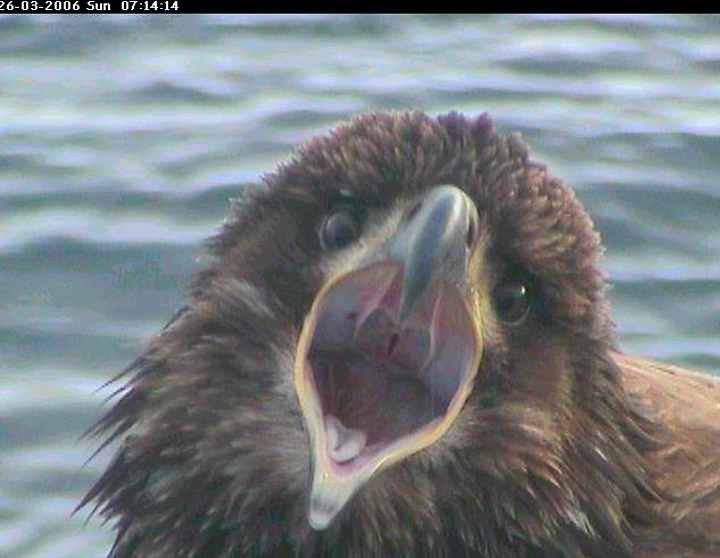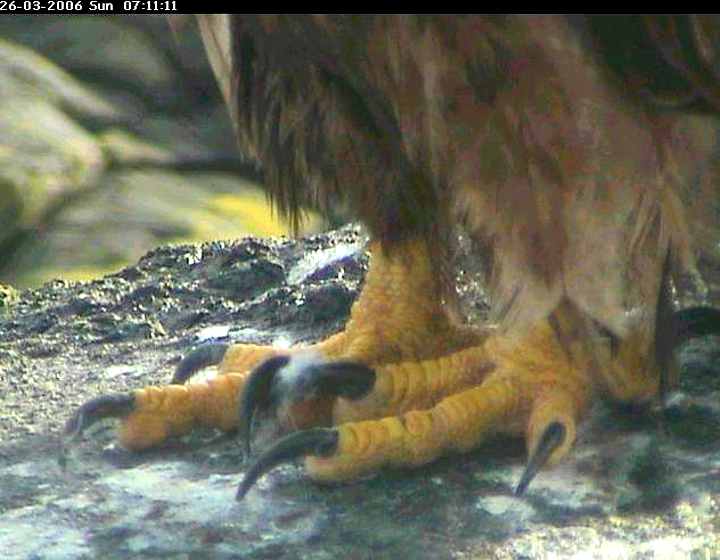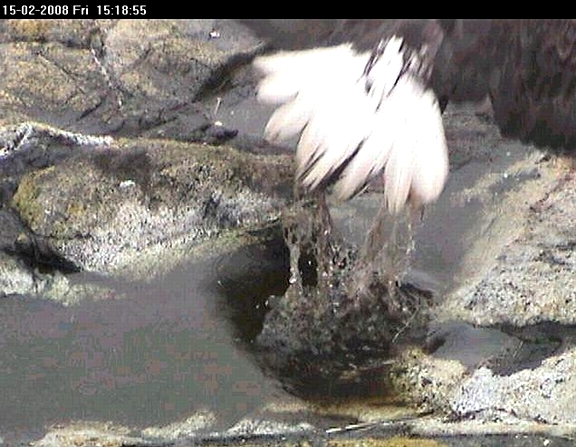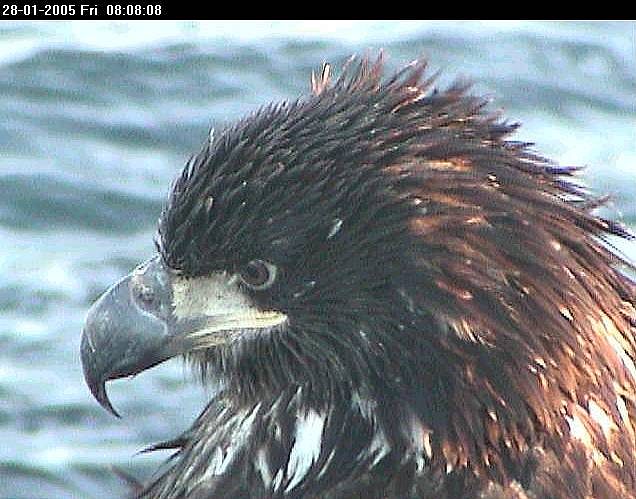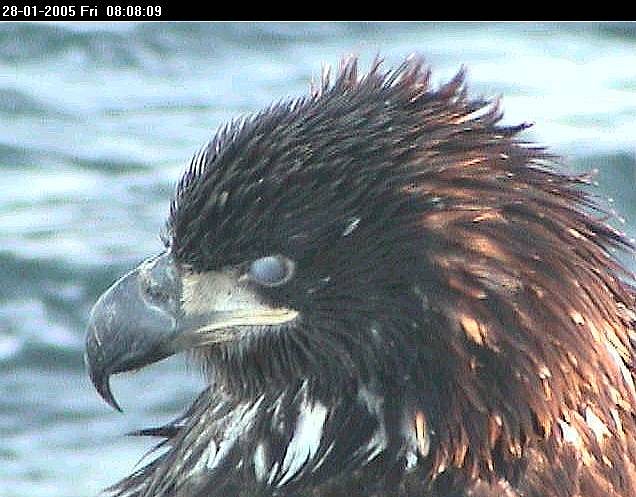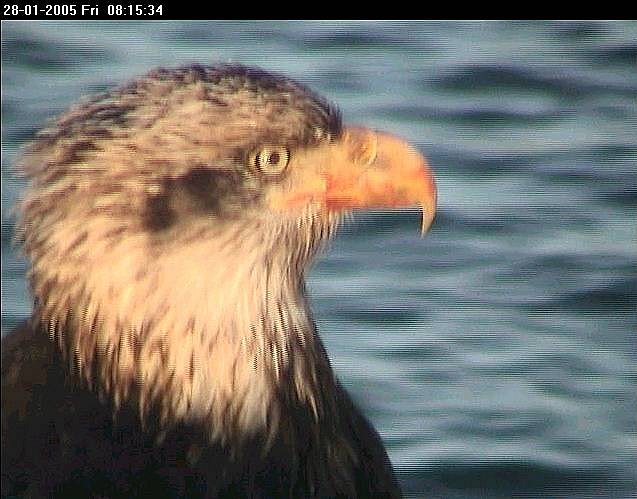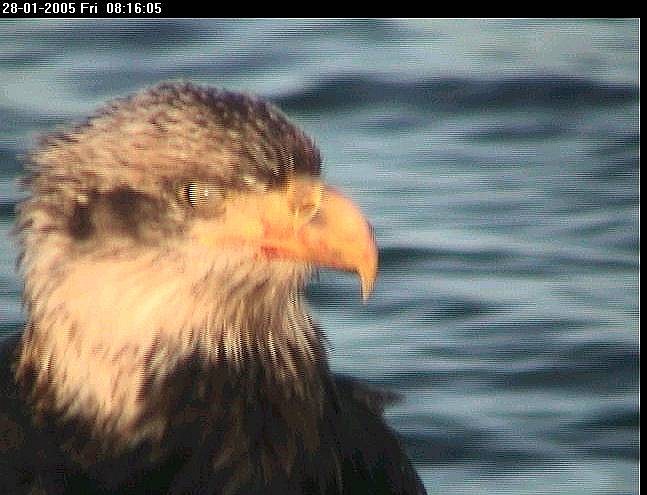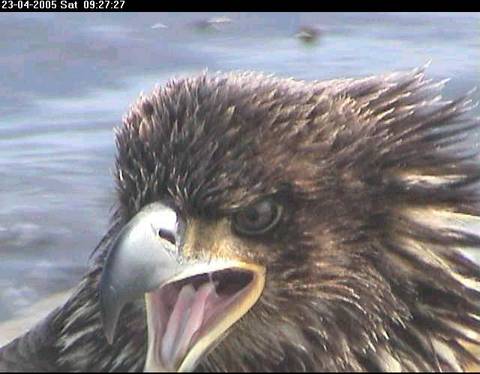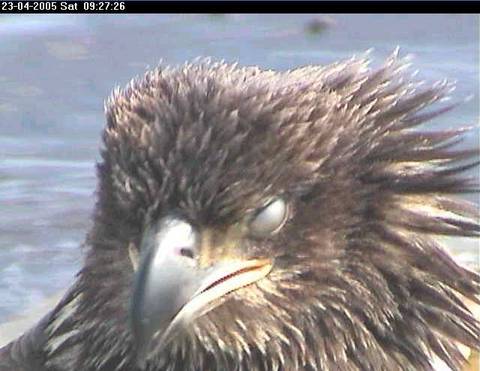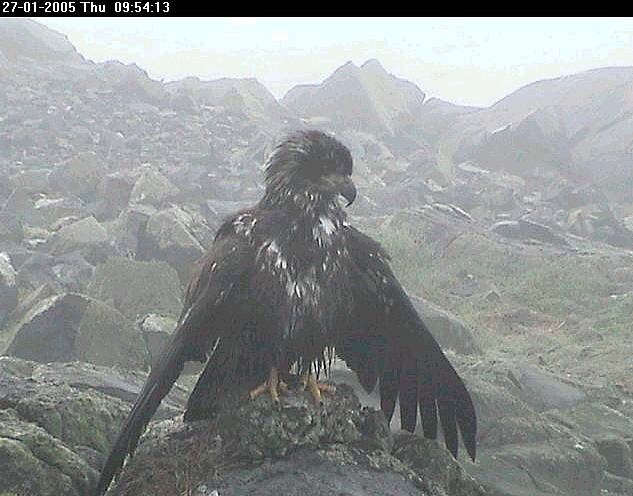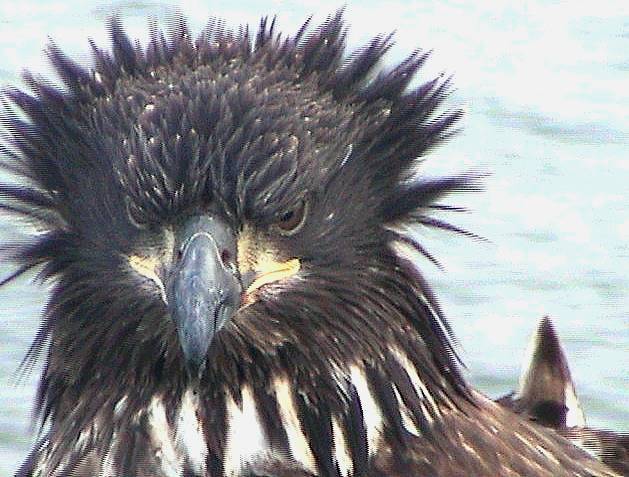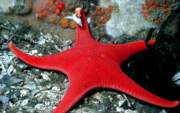
Mediaster in its habitat. Photo by Dr.A..Svoboda
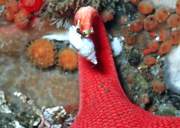
Snail predation
Vermillion stars are seen frequently by divers in the 0-15 meter depth at Race Rocks.
Information.
Bright red (vermillion in fact) with large plates along its five arms. To 20 cm. Common just below the surface on low tides but hardly ever high and dry. These are abundant subtidally – you may find plenty after storms or extreme tides.
This Vermillion star male was emitting sperm while in the tank at Pearson College in early January 2004 . This went on for more than three hours. Millions of sperm are broadcast into the water where they may have a chance encounter with eggs which are simultaneously released into the current by the females. Of the great numbers of eggs and sperm released only a few are fertilized and actually make it to maturity. This is a good example of
r-selection in the population.
– http://www.wavelengthmagazine.com/1998/jj98neigh.htm
Mediaster aequalis is one of the smaller sea stars ranging in size from three to seven inches. It is found on many types of beaches at very low tides.
– http://www.geocities.com/oscmarinetech/Animals.htm#Vermillion%20Star
The vermillion sea star is common in shallow subtidal waters. Its feeding area stretches to nearly the tip of each arm on the underside. The vermillion star, so named because of its colour can be found from the Alaskan Peninsula, south to southern Caifornia.
Colour: Vermillion aborally, more orange orally; tube feet red to flesh colour.
Habitat: common on rocks shell, sand, gravel, pebbles and mud.
Feeding: diet varies with substrate and season; eats encrustin sponges and bryozoans on ock; seapen.
Reproduction: breeds from March to May; number of eggs in 65mm sea star estimated at 1,800 per year. the eggs measure 1 to 1.2mm and are bright opaqe orange. It is estimated that Vermillion sea stars reach sexual maturity within four years.
Speed: The sea star can move anywhere between 27 and 40 cm per minute.
Reference: The Sea Stars of British Columbia, Lambert, 1981, British Columbia Provincial Museum, Victoria


